Living Primate Diversity
(Click on images for larger versions)
Primates are a group of mammals (Class Mammalia) that are predominantly arboreal (tree-dwelling). They are distinguished from other mammals by the presence of grasping hands/feet with flexible thumbs and toes, flat nails rather than claws on at least some digits, relatively few teeth with rounded bumps (molars), large forward-facing eyes, and a relatively large brain.
|
Bush Babies and lemurs are examples of relatively primitive primates collectively often referred to as "prosimians." They tend to be smaller sized, longer snouted and smaller brained than the monkeys and apes.
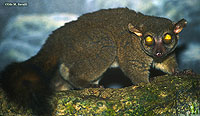
Bush Baby, Galago sp.
|
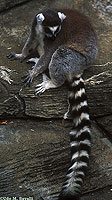
Ring-tailed Lemur, Lemur catta (Family Lemuridae)
|
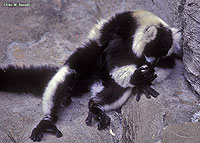
Black-and-white Ruffed Lemur, Varecia variegata (Family Lemuridae)
|

Coquerel's Sifaka, Propithecus coquereli (Family Indriidae)
|
There are two major groups of "monkeys": new world monkeys and tamarins are found in Central and South America. They usually have a prehensile, or grasping tail.
|
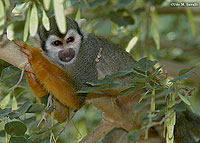
Common Squirrel Monkey, Saimiri sciureus, an New World monkey from South America
|
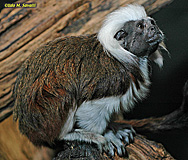
Cotton-top Tamarin, Saguinus oedipus, a tamarin from South America
|
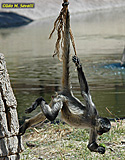
Black-handed Spider Monkey, Ateles geoffroyi
|

Pygmy Marmoset, Cebuella pygmaea, the world's smallest monkey
|
The Old World monkeys are found in Africa and Asia. They are most closely related to the apes and hominids. They differ from New World monkeys in the position of their nostrils and the structure of their tail.
|
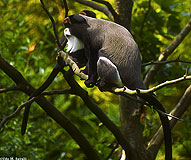
DeBrazza's Monkey, Cercopithecus neglectus
|

Olive Baboon, Papio anubis (photographed in Kenya)
|
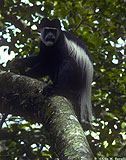
Guereza Colobus, Colobus guereza, an Old World monkey from Africa (photographed in Kenya)
|
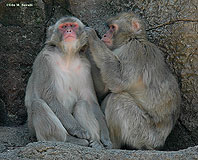
Japanese Macaques, Macaca fuscata, an Old World monkey from Asia
|
The apes are medium to large sized primates that lack a tail (a few monkeys are also tailless). There are two groups of apes. The 'lesser apes' (gibbons and siamangs) are smaller and move through forests by swinging from their very long arms. They are native to Asia. The great apes, a group which includes humans, are much larger. The orangutans are native to SE Asia while the other species occur in (or originated in) Africa.
|
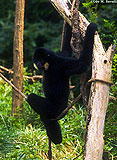
Yellow-cheeked Gibbon, Nomascus gabriellae, a lesser ape from Asia
|
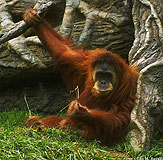
Sumatran Orangutan, Pongo abelii
|
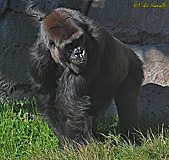
Western Gorilla, Gorilla gorilla, the largest ape is native to Africa
|
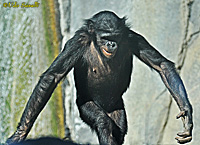
Bonobo, Pan paniscus
|
|
Representative Skulls of Living Primates
(Click on images for larger versions)
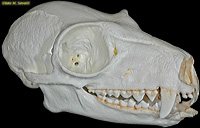
Ruffed Lemur Skull, Varecia variegata (a prosimian)
|
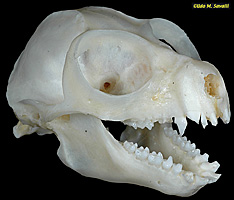
Sunda Slow Loris Skull, Nycticebus coucang (a prosimian)
|
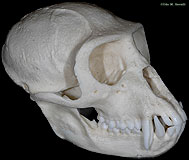
Vervet Monkey Skull, Cercopithecus aethiops (an Old World monkey)
|
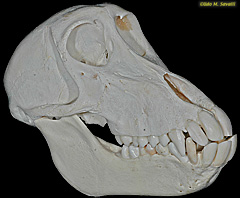
Hamadryas Baboon Skull, Papio hamadryas (an Old World monkey)
|
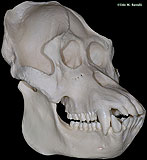
Orangutan skull, Pongo pygmaeus
|
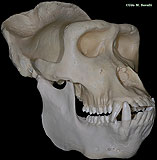
Gorilla skull, male, Gorilla gorilla
|
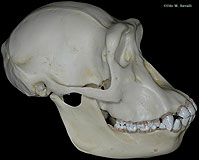
Chimpanzee skull, Pan troglodytes (a great ape and the closest living relative of humans)
|
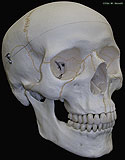
Human skull, Homo sapiens
|
|
Fossil Hominids

|
<<
Australopithecus afarensis
3.9 to 2.9 million years ago
>>
Australopithecus africanus
3.0 to 2.3 million years ago
|
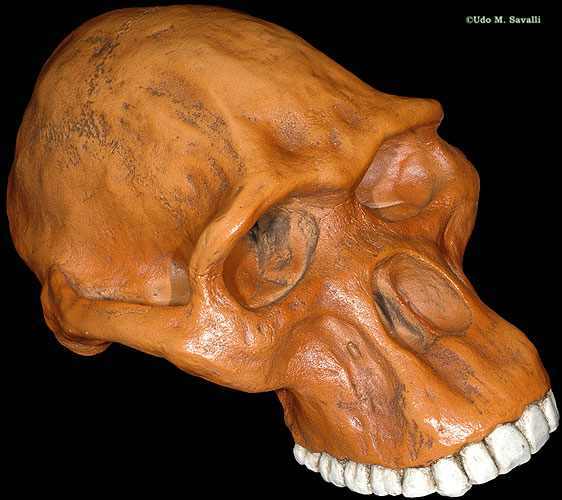
|
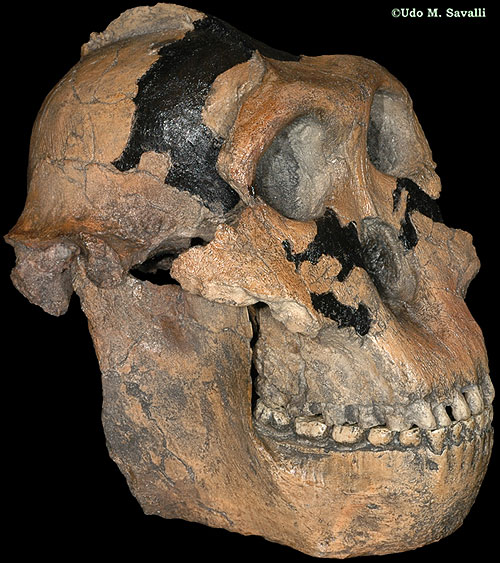
|
<<
Paranthropus boisei
2.3 to 1.4 million years ago
>>
Paranthropus aethiopicus
2.7 to 1.9 million years ago
|
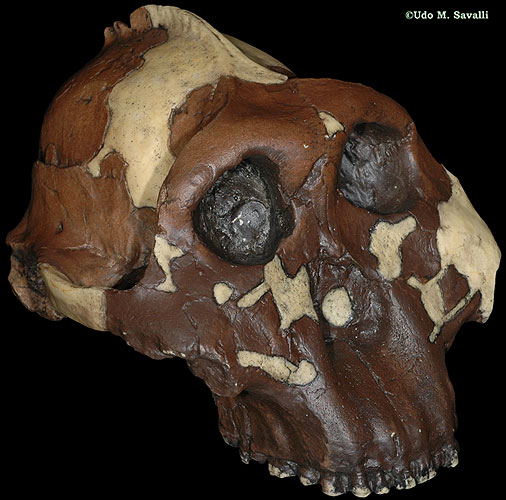
|
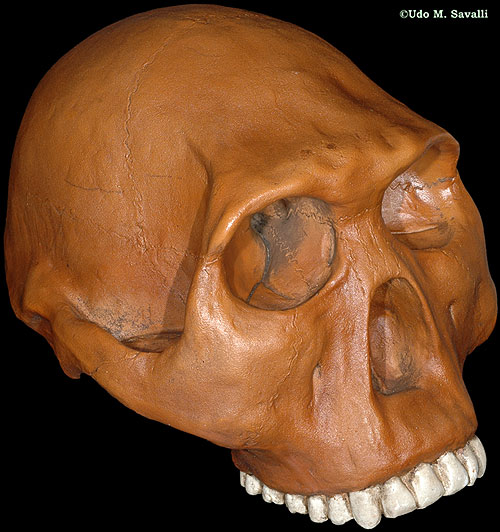
|
<<
Homo habilis
2.3 to 1.4 million years ago
>>
Homo ergaster
1.9 to 1.3 million years ago
|
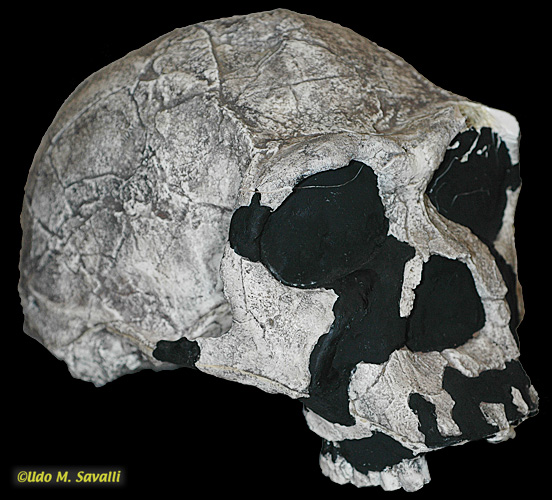
|

|
<<
Homo erectus
1.8 to 0.3 million years ago (may have persisted until 50,000 years ago in Java)
>>
Homo neanderthalensis
300 to 30 thousand years ago
|
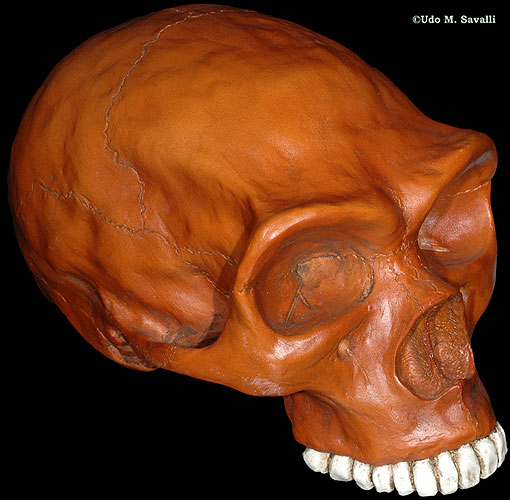
|
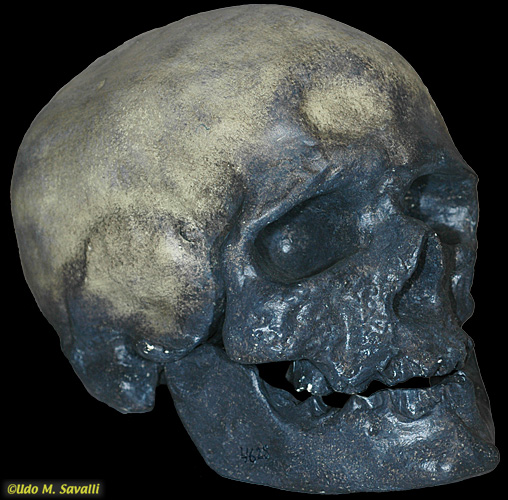
|
<<
Homo sapiens "Cro Magnon Man"
160,000 years ago to present
>>
Homo sapiens (Modern)
160,000 years ago to present
|
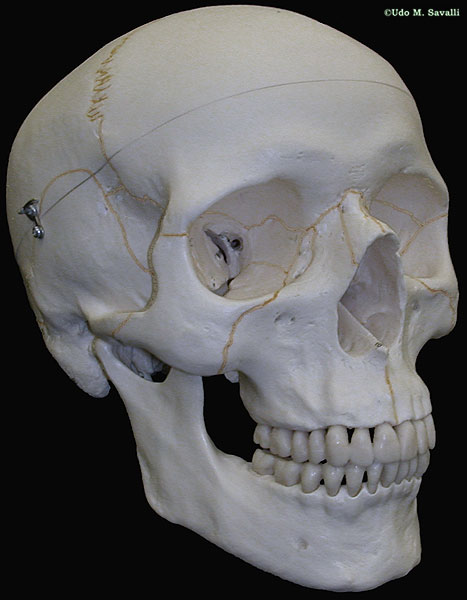
|
|
|